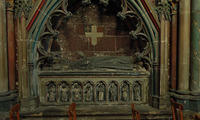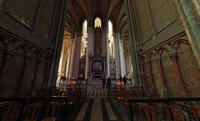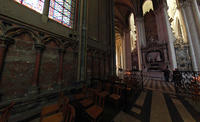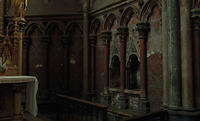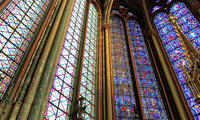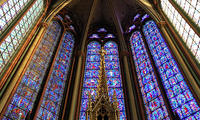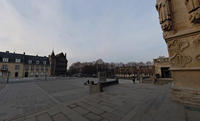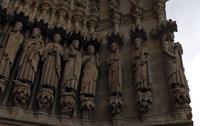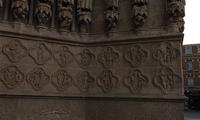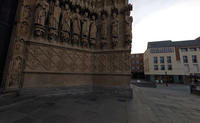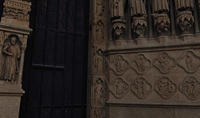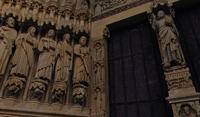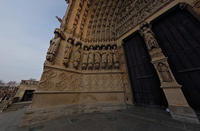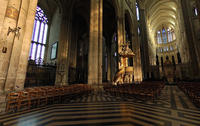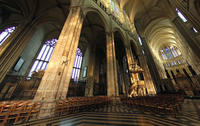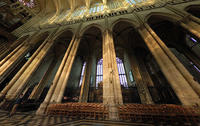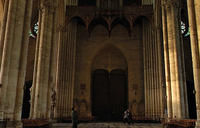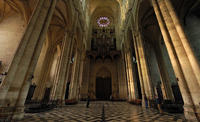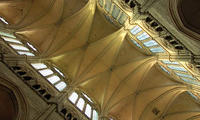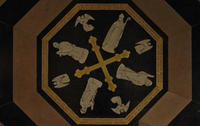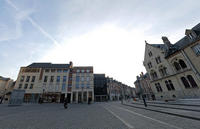You are in: Europe -> France -> Amiens Cathedral, and traditional search or Image Gallery will yield results of this site only
Amiens Cathedral
| Site number: | 162 |
|
| Type of site: | Cultural | |
| Date: | 13th Century | |
| Date of Inscription: | 1981 | |
| Location: | Europe, France, Picardie Region, Département of Somme | |
| Video: |
|
Up to 75 images are shown here. Click on each for more details or on Image Gallery for more images.
Six official UN languages:
Arabic,
Chinese,
English,
French,
Russian,
Spanish
Other languages: Dutch, Finnish, Georgian, German, Hebrew, Hungarian, Italian, Japanese, Low German, Luxembourgish, Norwegian-bokmål, Polish, Slovenian, Swedish
Other languages: Dutch, Finnish, Georgian, German, Hebrew, Hungarian, Italian, Japanese, Low German, Luxembourgish, Norwegian-bokmål, Polish, Slovenian, Swedish
| Description: | The 13th century Amiens Cathedral, lying in the heart of Picardy, is one of the largest 'classic' Gothic churches. The site has gained recognition for the splendor of its three-tier interior elevation, the coherence of its plan, and the exceptionally fine demonstration of sculptures found on the principal facade and in the south transept. --WHMNet paraphrase from the description at WHC Site, where additional information is available. For 360 degree imaging of this site, click here. | |
| The Cathedral of Our Lady of Amiens (French: Cathédrale Notre-Dame d'Amiens), or simply Amiens Cathedral, is the tallest complete cathedral in France, with the greatest interior volume (estimated at 200,000 m³). The vaults of the nave are 42.30 m high, the tallest nave vaults in France. This monumental cathedral is located in Amiens, the chief city of Picardy, in the Somme River valley a little over 100 kilometers north of Paris. The west front of the cathedral, built in a single campaign, 1220-36, shows an unusual degree of artistic unity: its lower tier with three vast deep porches is capped with the gallery of twenty-two over lifesize kings, which stretches across the entire façade beneath the rose window. Above the rose window there is an open arcade, the galerie des sonneurs. Flanking the nave, the two towers were built without close regard to the former design, the south tower being finished in 1366, the north one, reaching higher, in 1406. The paucity of documentation concerning the construction of the Gothic cathedral may be in part the result of fires that destroyed the chapter archives in 1218 and again in 1258—a fire that damaged the cathedral itself. Bishop Evrard de Fouilly initiated work on the cathedral in 1220. Robert de Luzarches was the architect until 1228, and was followed by Thomas de Cormont until 1258. His son, Renaud de Cormont, acted as the architect until 1288. The chronicle of Corbie gives a completion date for the cathedral of 1266. Finishing works continued, however. Its floors are covered with a number of designs, such as the swastika. The labyrinth was installed in 1288. Numerous sculptures can be viewed at this cathedral. The cathedral contains the alleged head of John the Baptist, a relic brought from Constantinople by Wallon de Sarton as he was returning from the Fourth Crusade. Statues of saints in the portal of the cathedral have been identified as the locally venerated Saints Victoricus and Gentian, Saint Domitius, Saint Ulphia, and Saint Fermin. Notre-Dame d'Amiens has been listed as a UNESCO World Heritage Site since 1981. A Son et lumière presentation illuminates its façade on summer evenings and at New Year's, approximating the original painted colors of its sculptures. --Wikipedia. Text is available under the Creative Commons Attribution-ShareAlike License. For 360 degree imaging of this site, click here. | ||
| Source: | http://whc.unesco.org/en/list/162 | |
| Source2: | http://whc.unesco.org/en/list/162/video | |
| Reference: | 1. UNESCO World Heritage Center, Site Page. | |


 NHK World Heritage 100 series
NHK World Heritage 100 series



